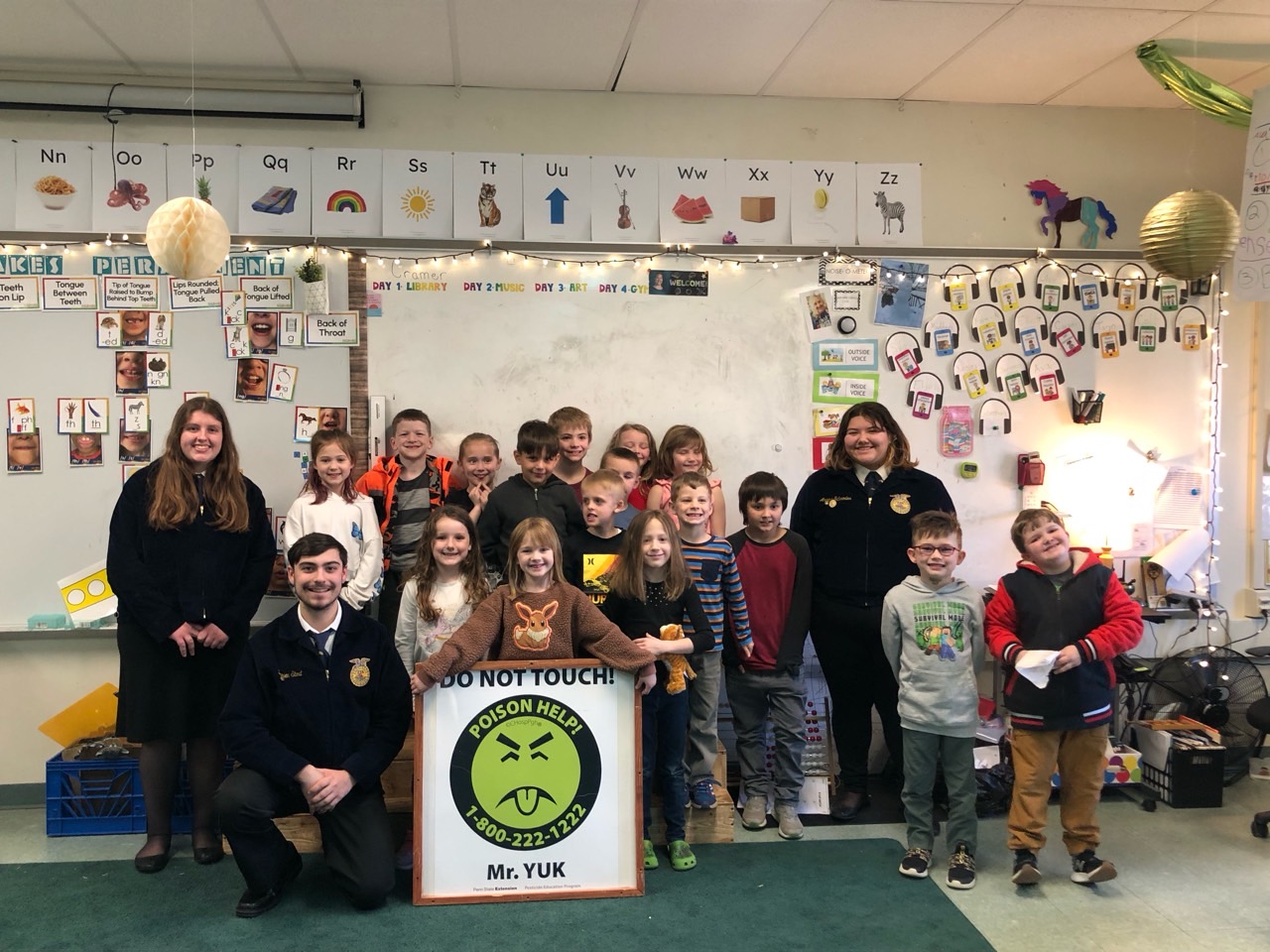West Perry FFA Members Help to Inform Elementary Students and Families about Poison Prevention Procedures

In 2021, the Poison Control Center reported that there were 627 incidents of poison exposures per 100,000 people (includes all ages). However, the highest percentage of incidents occurred among one- and two-year-old children, with 6,439 and 5,997 exposures per 100,000 children in the respective age groups. The primary reason for the high numbers of chemical interactions in children was that adults left these chemicals/poisons unattended or stored improperly around children.
To combat this issue, on March 21st, 2024, West Perry FFA members traveled to the 1st-grade classes of each West Perry School District’s Elementary schools to give their annual Poison Prevention Presentations. The group was able to present to eight 1st-grade classrooms in total. The presenters emphasized the importance of avoiding household poisons without adult approval and supervision.
What exactly are household poisons? By definition, a poison is a substance that is capable of causing illness or death to an organism when improperly interacted with. This includes but is not limited to cleaning supplies such as Bleach or Clorox, products used for pest control like Roundup, common garage fluids such as WD-40 or Motor Oil, or over the counter and prescription medications.
With the help of Mr. Yuk, the first graders were taught how to handle a situation where someone has been exposed to toxic chemicals. Mr. Yuk was created by the Pittsburgh Poison Control Center in 1971 and became the first nationally recognized symbol for poison awareness. Mr. Yuk is most commonly seen in the form of bright green stickers, which are stuck on chemicals by adults as a warning. This allows people of all ages to know a chemical is toxic without handling the bottle, which helps limit skin contact, breathing in the toxic fumes, and ingestion of the product. Mr. Yuk stickers also contain the national toll-free poison help center number, 1-800-222-1222. The students were encouraged to share the information they learned with their parents so that their families could create a safety plan should an accident occur.
Another way to identify chemicals is by reading the labels and locating signal words. The Hazardous Communication Standard mandates that signal words, or words that convey the dangers of a specific chemical, are located on the label of hazardous products. Common signal words include caution, warning, danger, and danger poison.
However, the best solution to prevent the interaction of curious children with chemicals is to store chemicals properly. The product should be in a container with the corresponding label and stored in high, locked, child-proof locations. This prevents children, pets, and other family members from accidentally being harmed by chemicals.
Contact the Poison Control right away if you suspect a poisoning. Help is available online or by phone at 1-800-222-1222. Both options are free, expert, and confidential.
Call 911 right away if the individual collapses, has a seizure, has trouble breathing, or can’t be awakened.
Written By:
Lila Kretzing
West Perry FFA Reporter
Photo Caption: West Perry FFA presenters Leah Clouse, Draven Stout, and Ariana Alverado- Schroder pose with a 1st grade class from New Bloomfield Elementary after giving their Poison Prevention Presentation. Not pictured are presenters Jensyn Dillman, Katelynn Leber, Henna Windemaker, William Thieman, Sayde Weidenhof, and Kaylin Mitten.